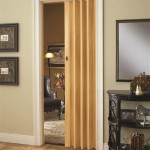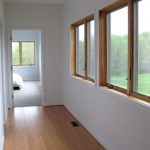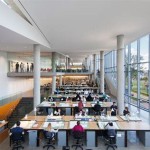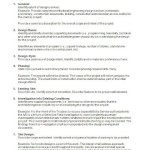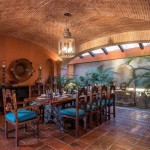The Art and Science of Interior Design Space
Interior design space encompasses far more than simply arranging furniture within a room. It is a multifaceted discipline that blends artistic creativity with technical knowledge to craft environments that are both aesthetically pleasing and functionally efficient. The effective use of space considers human behavior, accessibility, and the psychological impact of the surrounding environment. It necessitates a deep understanding of design principles, building codes, and material properties.
The core of interior design space lies in transforming a three-dimensional area into a cohesive and purposeful setting. This process involves careful planning, considering the existing architectural framework, and implementing design solutions that optimize the use of available square footage. A successful interior design scheme considers the needs and preferences of occupants, whether it's a residential home, a commercial office, or a public space.
Understanding the Elements of Spatial Design
Several key elements are critical to consider when approaching the design of interior space. Each contributes uniquely to the overall impression and functionality of the environment.
Line: Lines, whether horizontal, vertical, or diagonal, define the shape and structure of a space. Horizontal lines can create a sense of stability and calm, while vertical lines can suggest height and strength. Diagonal lines introduce dynamism and movement. The strategic use of linear elements, such as architectural details, furniture arrangement, and the application of paint or wallpaper, can significantly impact the perceived dimensions and atmosphere of a room.
Form: Form refers to the three-dimensional shape of objects within a space. Furniture, architectural elements, and even accessories contribute to the overall form of a room. The selection and placement of forms is crucial for creating visual harmony and balance. Considering the relationships between positive and negative space – the occupied versus unoccupied areas – is important for achieving a comfortable and aesthetically pleasing composition. Overcrowding can create a sense of claustrophobia, while sparsely furnished spaces can feel cold and impersonal.
Color: Color plays a fundamental role in shaping the mood and personality of a space. Different colors evoke different emotions and can influence perceptions of size and temperature. Warm colors, such as red, orange, and yellow, tend to create a feeling of warmth and energy, while cool colors, such as blue, green, and purple, promote a sense of calm and serenity. The strategic use of color can also be employed to highlight specific architectural features or to create visual interest. Color psychology is an important consideration when choosing a color palette, particularly in spaces designed for specific purposes, such as relaxation or productivity.
Texture: Texture refers to the tactile quality of surfaces within a space. It can be both visual and physical, adding depth and complexity to the overall design. Incorporating a variety of textures, such as smooth, rough, soft, and hard, can create visual interest and enhance the sensory experience of the environment. Texture can be introduced through the use of different materials, such as wood, stone, fabric, and metal. The interplay of contrasting textures can add richness and sophistication to a space.
Light: Light is essential for illuminating a space and creating a sense of atmosphere. Natural light is often preferred for its positive impact on mood and well-being, but artificial lighting plays a crucial role in supplementing natural light and providing illumination during evening hours. Different types of lighting, such as ambient, task, and accent lighting, can be used to create different effects and to highlight specific features of the space. The strategic placement of light fixtures and the careful selection of light bulbs can dramatically alter the perceived size and shape of a room.
Principles of Spatial Organization
Beyond the fundamental elements, interior design space relies on established principles of organization to guide the placement and arrangement of these elements. These principles ensure that the space is not only visually appealing but also functional and comfortable.
Balance: Balance refers to the equal distribution of visual weight within a space. It can be achieved through symmetrical, asymmetrical, or radial arrangements. Symmetrical balance creates a sense of formality and stability, while asymmetrical balance offers a more dynamic and informal aesthetic. Radial balance, in which elements radiate from a central point, can create a sense of focus and unity.
Harmony: Harmony is the cohesive relationship between all the elements in a space. It is achieved by selecting colors, textures, and forms that complement each other and create a sense of visual unity. Harmony doesn't necessarily mean matching everything perfectly, but rather creating a sense of visual coherence and flow.
Emphasis: Emphasis is the creation of a focal point within a space. It draws the eye to a specific area or object, creating visual interest and hierarchy. A focal point can be achieved through the use of color, texture, lighting, or a unique architectural feature. Effective emphasis helps to guide the eye and to create a sense of order within the space.
Proportion and Scale: Proportion refers to the relative size of objects within a space, while scale refers to the size of objects in relation to the human body. Maintaining proper proportion and scale is crucial for creating a comfortable and visually pleasing environment. Furniture that is too large or too small for a space can create a sense of imbalance and discomfort. Carefully considering the dimensions of the room and the size of the occupants is essential for achieving appropriate proportion and scale.
Rhythm: Rhythm is the repetition or variation of elements within a space. It creates visual movement and interest, guiding the eye through the room. Rhythm can be achieved through the use of color, texture, form, or line. Repeating a particular pattern or motif can create a sense of unity, while varying the repetition can add dynamism and excitement.
Practical Applications of Interior Design Space
The principles of interior design space are applied across a wide range of settings, each with its own unique requirements and challenges. Understanding the specific needs of each type of space is crucial for creating effective and functional designs.
Residential Spaces: In residential design, the focus is on creating comfortable and inviting living spaces that reflect the personality and lifestyle of the occupants. This includes considerations such as furniture selection, color palettes, lighting schemes, and the arrangement of spaces to facilitate daily activities. The design should prioritize comfort, functionality, and personal expression.
Commercial Spaces: Commercial interior design focuses on creating functional and aesthetically pleasing environments that support business operations and enhance the customer experience. This includes considerations such as office layout, retail display design, and the creation of welcoming and efficient spaces for employees and customers. The design should prioritize productivity, efficiency, and brand identity.
Hospitality Spaces: Hospitality design focuses on creating welcoming and comfortable environments for guests in hotels, restaurants, and other hospitality settings. This includes considerations such as room layout, furniture selection, lighting schemes, and the creation of a relaxing and inviting atmosphere. The design should prioritize guest comfort, convenience, and a memorable experience. Attention to detail is critical in hospitality design, as even small elements can contribute to the overall impression of the space.
Healthcare Spaces: Healthcare design focuses on creating healing and supportive environments for patients, staff, and visitors in hospitals, clinics, and other healthcare settings. This includes considerations such as infection control, accessibility, noise reduction, and the creation of a calming and stress-reducing atmosphere. The design should prioritize patient well-being, staff efficiency, and a positive healing environment.
The success of interior design space hinges on a comprehensive understanding of its core elements and principles, combined with a keen awareness of the specific needs and requirements of the intended use. By thoughtfully applying these concepts, designers can create spaces that are not only aesthetically pleasing but also functional, comfortable, and supportive of the activities that take place within them.

The Definitive Guide To Space Planning In Interior Design Foyr

The Definitive Guide To Space Planning In Interior Design Foyr

7 Elements Of Interior Design That Define And Refine Your Space Jd Institute Fashion Technology

7 Elements Of Interior Design That Define And Refine Your Space Jd Institute Fashion Technology

The Concept Of Positive And Negative Space In Interior Design All About Interiors

32 Small House Interior Design Ideas How To Decorate A Space

Interior Design Tips To Help You Redesign Your Living Room

Importance Of Space Planning In Interior Designing Hamstech

Essential Checklist For Your Office Interior Design Decorilla

What Futuristic Interior Design Space Planning Dreamzone

